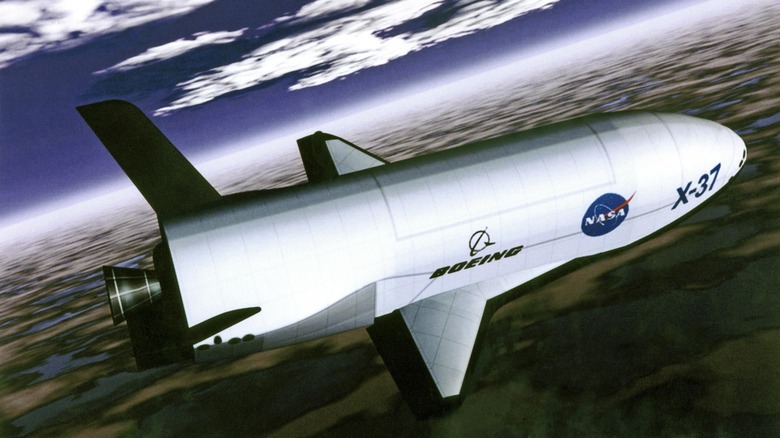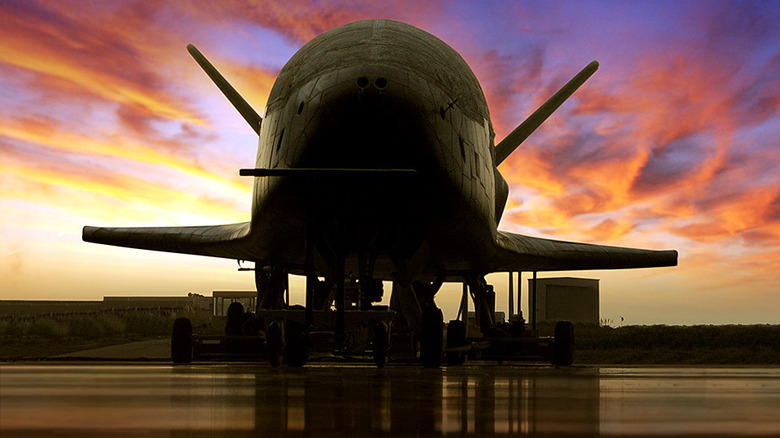The Bizarre Space Force Plane That Hasn't Landed In 2 Years
The U.S. Space Force got off to a complicated start. Born as a campaign promise from Donald Trump, it wasn't terribly clear at the beginning what the Space Force's role would be among America's armed services. It received quite a bit of political pushback (and no small amount of ridicule) as a resurrection of 80s SDI thinking (via Arms Control) and an unwelcome intrusion of the military into America's space strategy. Prior to Trump's proposal, American space travel had been managed by NASA, a civilian government agency. With NASA itself under complex pressures amidst the rise of private-sector spaceflight, no one seemed quite sure what to do with the new Space Force. It finally got funding in 2019 (via Space Force), less than a year before Trump, its most active advocate, would lose the Presidency.
At the same time, the U.S. Space Force exists. It was founded, funded, staffed, and has been operating for almost 3 years. It had to do something with its time. With little fanfare, the Space Force has carried out several space missions with consistent success. Most recently, it broke an impressive record when a Space Force vehicle completed the longest-ever orbital flight. Here's how.
Long-haul flight in the era of cheap orbital access
Properly speaking, the Space Force's X-37B unmanned space plane hasn't just broken the orbital flight record. It's still breaking it. The X-37B is still in flight and fully operational, as it has been for over 900 days. Per Popular Science, it launched from Cape Canaveral on May 17, 2020 and has been carrying out mission duties since.
Details on activities are scarce; the Space Force is after all a branch of the military. Many specifics of the X-37B's mission, designated USA-299, are classified. One objective that wasn't classified was the deployment of a FalconSat-8, an educational payload designed by U.S. Air Force Academy cadets for future studies in space (via USAFA). Per N2YO, the X-37B also carries two NASA experiments pertaining to orbital radiation, plus a payload for testing power-beaming with microwave radiation.
All in all, the little X-37B has been pulling its weight for the last 900-odd days. Whatever the administrative future of the U.S. Space Force, it can chalk up at least one unqualified success.

